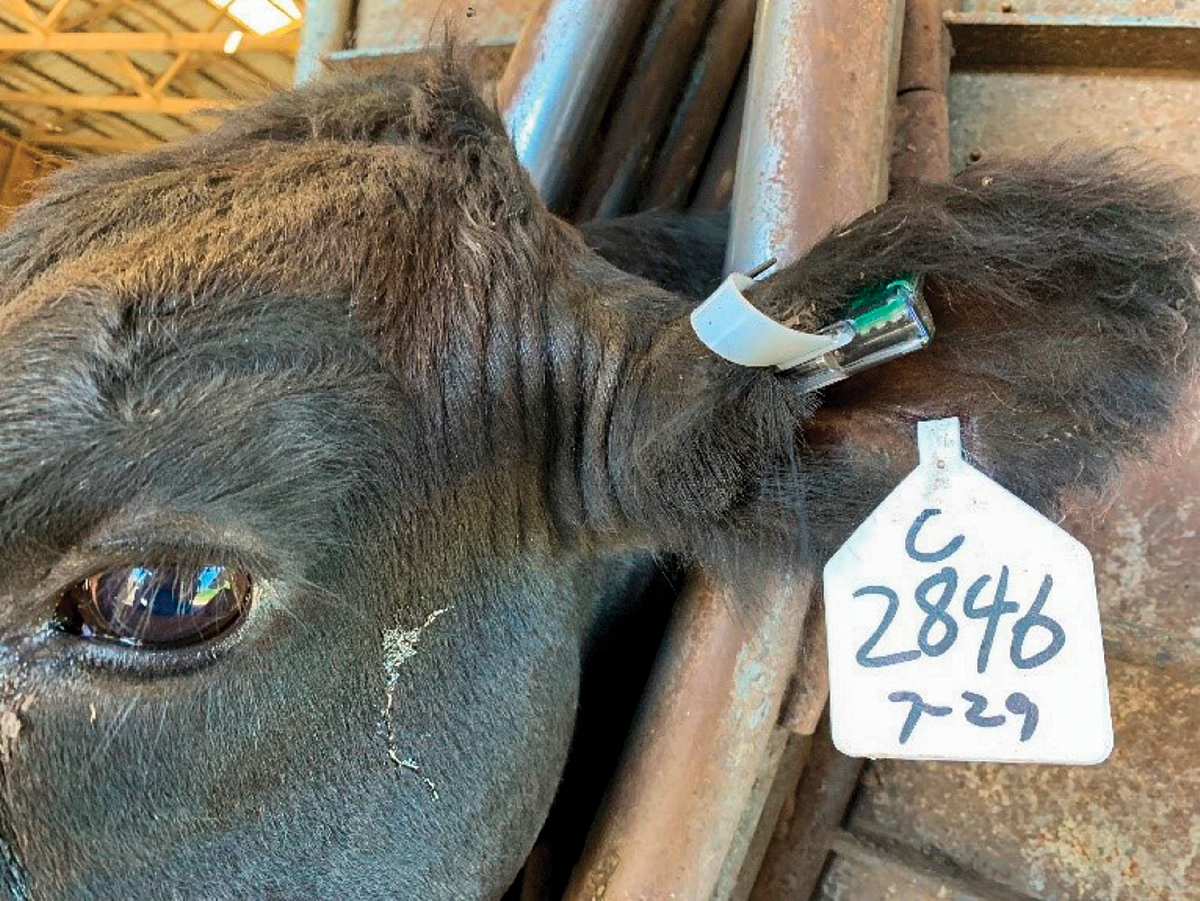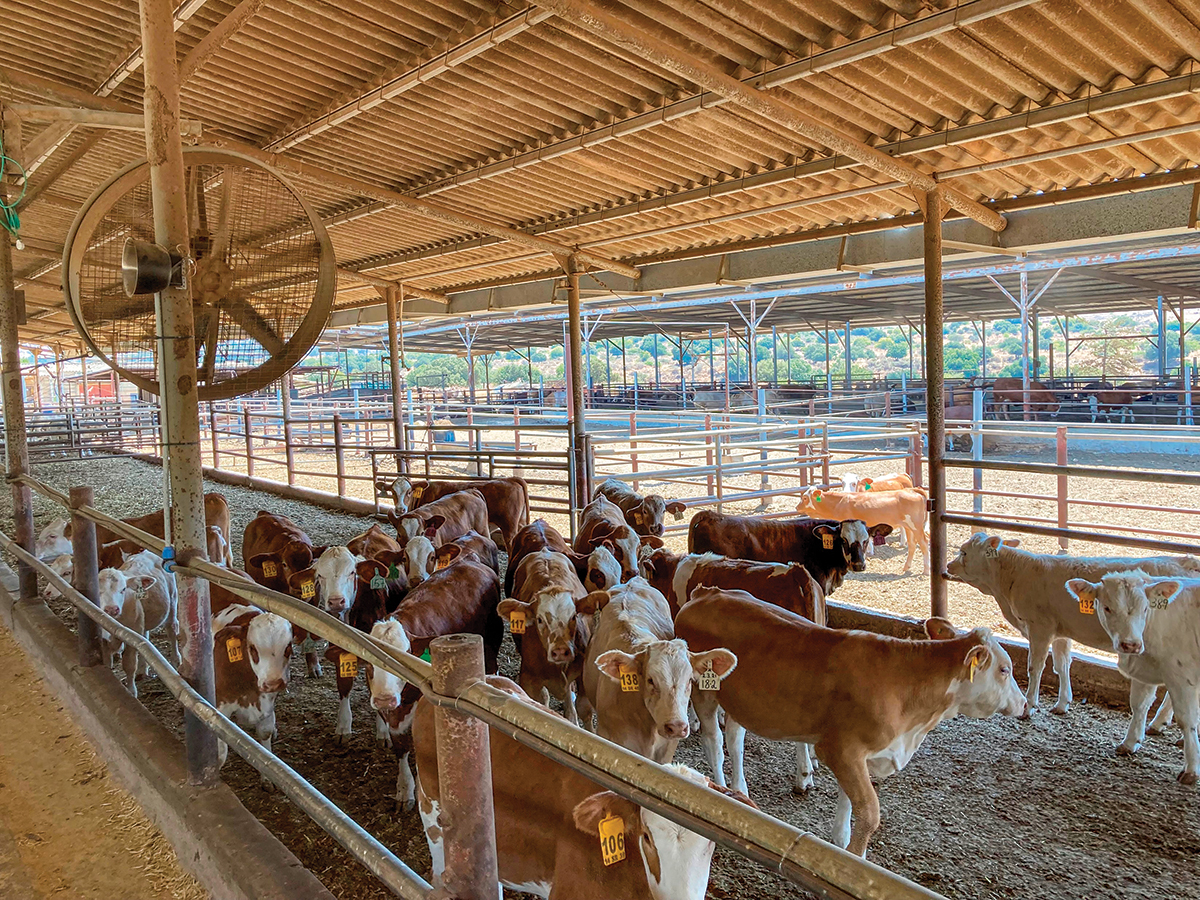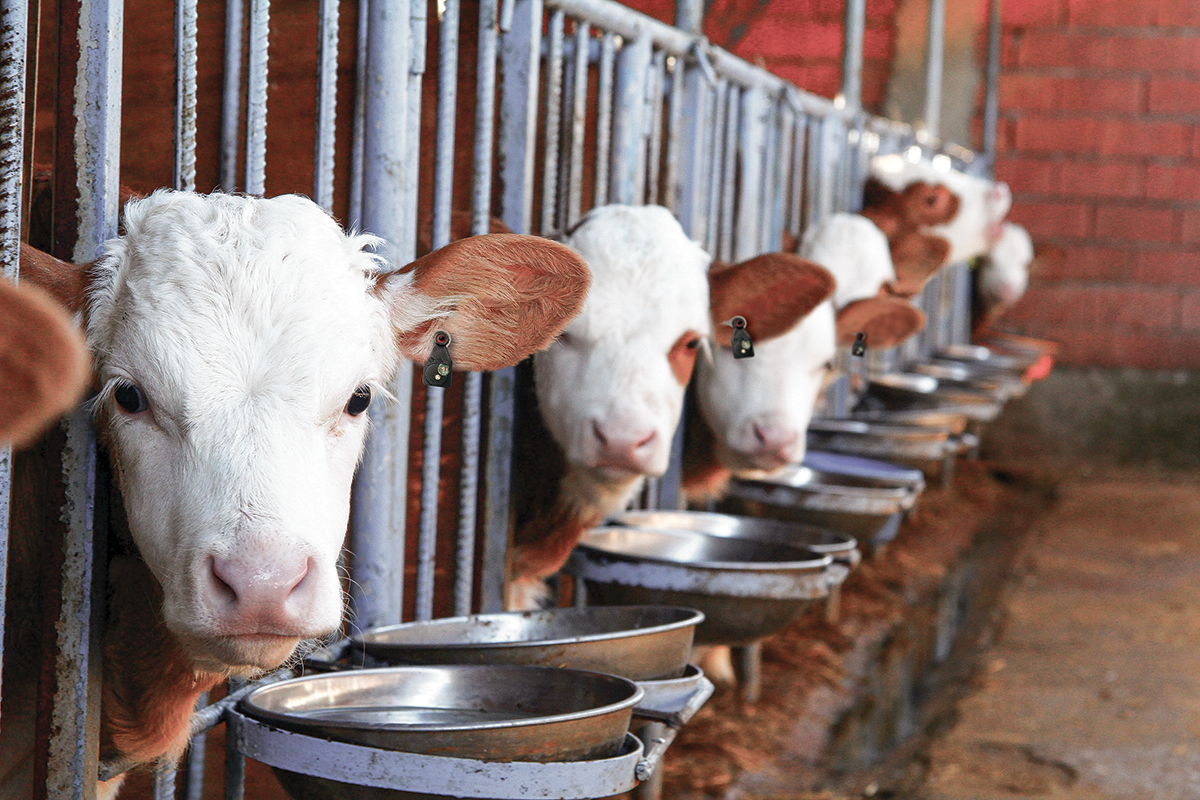One challenge in the livestock industry is keeping animals healthy, and a key factor is being able to detect illness early and treat early with less stress and setback for the animal and less cost to the producer.
A number of innovative devices have been created to measure animal temperature remotely (so an operator can “read” the temperature without restraining the animal), since fever is one of the first indicators of disease. A high temperature may also indicate heat stress. There are several companies marketing temperature-reading tags.
Merck’s SenseHub
Merck Animal Health announced their new SenseHub Feedlot technology at the National Cattlemen’s Beef Association convention and tradeshow in February. This product is proven to detect sick cattle earlier and more efficiently and accurately than visual observation. SenseHub Feedlot features an illuminating electronic eartag that makes it easy to identify cattle needing attention.
 Merck’s SenseHub Feedlot tag captures body temperature via the ear canal. Photo provided by Jack Nickell.
Merck’s SenseHub Feedlot tag captures body temperature via the ear canal. Photo provided by Jack Nickell.
Jason Nickell, director of insights and outcomes at Merck, says the goal was 24/7 monitoring of calves in backgrounder, stocker and feedlot programs. “This captures body temperature via the ear canal, but also monitors activity. It captures information multiple times during the day, then uses artificial intelligence to determine if that animal is different from its own history [i.e., behaving differently today than yesterday] or different than the group it’s in,” he says. This technology looks for outliers and lets you know if one individual is a bit different. The tags have a communication range up to about 2 miles from the antenna.
It’s not always easy for a human to pinpoint a sick animal. If you can look at the group before cattle see you, you might notice that one is dull, but once they see you, they become alert and focused on you since, as herd animals, their instinct is to flee from predators.
“Now we don’t have to rely on visual clues,” says Nickell. “Data generated by this technology allows us to be more accurate and much earlier in treatment decisions. We are finding these animals about three days earlier than a pen rider can, which means improved treatment success and reduced mortality while reducing the labor involved.”
The employee, producer or manager receives a daily pull list on a mobile device and/or computer that includes individual animals identified by the system for further assessment. At the same time, an LED light on sick animals’ tags illuminates and flashes, so pen riders can spot them at a glance. Research at an Oklahoma feedyard showed that monitoring with the SenseHub Feedlot system significantly reduced mortality due to bovine respiratory disease compared with traditional pen rider observation, and riders who observed cattle visually entered an average of 18 pens per day, compared with an average of only 5.3 pens per day when assisted by SenseHub Feedlot.
These tags are reusable with a lifespan of two-and-a-half to three years.
Medisim’s TAGim
A different type of eartag called TAGim is now coming onto the market. This remote animal-monitoring system was developed by Israel-based Medisim Ltd., a manufacturer of clinical thermometers in the human medical field.
 Medisim’s U.S. pilot programs were conducted on feedlots in Kansas. Photo provided by Yossi Wittman.
Medisim’s U.S. pilot programs were conducted on feedlots in Kansas. Photo provided by Yossi Wittman.
“Performance and cost effectiveness have been obstacles in efforts to create a useful monitoring system for livestock,” says Yossi Wittman, vice president of business development at Medisim.
This company has been mass producing human thermometers for more than 25 years. “It’s all about convenience, reliability and price, and we want our livestock tags to keep within that philosophy as an affordable high-value product. Our health-monitoring tag looks like the standard visual ID tags with a printed ID number,” says Wittman.
The TAGim smart tag contains an electronic printed circuit with sensors, a battery and a Bluetooth transmitter. “This easy-to-install tag collects 24/7 temperature and doesn’t rely on having a probe into the ear or an infrared sensor that needs to point in the right direction,” he says.
The tag also measures feeding behavior, tracking presence at the bunk and the time the animal spends at the feedbunk. “We need a way to pinpoint the one that actually is sick and needs treatment. We can do that because of the additional information about feeding behavior,” says Wittman. The data is presented online to users, and an assignment engine generates pen rider pull lists on a mobile app.
Fever Tags
John Greer, chairman of Fever Tags, says that when his company started testing technology on cattle, they found that just because an animal’s temperature rises above “normal” does not necessarily mean the animal is sick. A temporary rise can be due to exertion, stress, hot ambient temperature, what the animals are eating and more.
 John Greer of Fever Tags recommends the six-hour, high-temperature duration model for pre-weaned calves. Photo provided by John Greer.
John Greer of Fever Tags recommends the six-hour, high-temperature duration model for pre-weaned calves. Photo provided by John Greer.
“The animal in those situations will usually cool down to normal again, but what we determined, through veterinary colleges studying thousands of cattle, is that when body temperature stays above 103.5ºF for six hours or more, this is the best early indicator of illness,” he says. “Our technology can detect problematic temperature rise about 72 hours before the animal shows physical signs. The key factors we monitor are not only higher temperature, but duration. This combination is the indicator an animal is sick.”
The Legacy tag has been on the market several years. “This is our static tag; all the electronics are on board, within the tag. When the animal’s temperature has breached temperature and duration thresholds, a light flashes on the tag. We pre-program duration for six hours or 12 hours, depending on the age and size of the animal,” says Greer.
“If you are putting tags in day-old calves and keeping them through weaning age, we recommend the six-hour tag, because you want to catch and treat disease early in those young calves. If you are putting tags in older calves or adults, we recommend the 12-hour tag.”
Once that temperature level is hit, a light on the tag goes on to help you identify which animal has a fever. Then you can bring that animal in for closer checking and treatment and reset the tag. “If that animal is able to cool itself and body temperature drops below that level, it can all start over again. You can keep that tag in the animal or clip it out and put it in a new animal,” he explains.
Fever Tags is developing a new cloud-connected data tag with the same basic functions except it is connected to the cloud, allowing you to receive data and sickness notifications remotely on your phone. “You can keep records on that animal – other tags, brands, history, etc. It provides what we have trademarked a Cattle Passport,” says Greer. “This will be able to transmit 3 to 4 miles in any direction. One gateway can handle more than a million head in a 4-mile radius. This is equivalent to coverage on a 40,000-acre ranch or the largest of feedyards.”
“We just made the first 500 of these new tags and put those into the field. We will watch those for two weeks to get feedback from customers where we’ve placed them. Once we have their feedback, we will formally launch the cloud-connected tag.”








